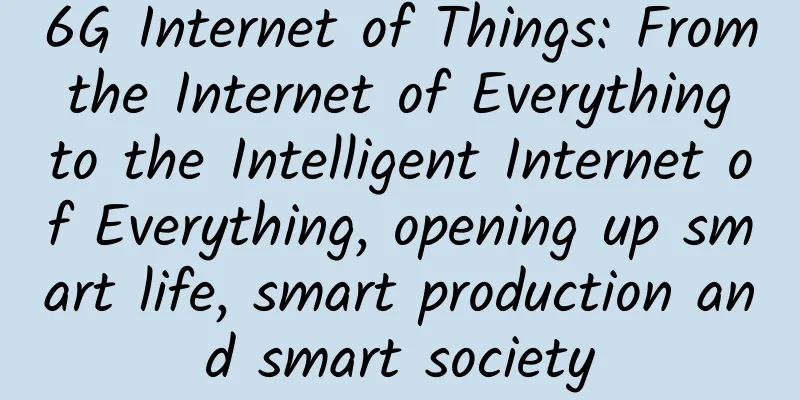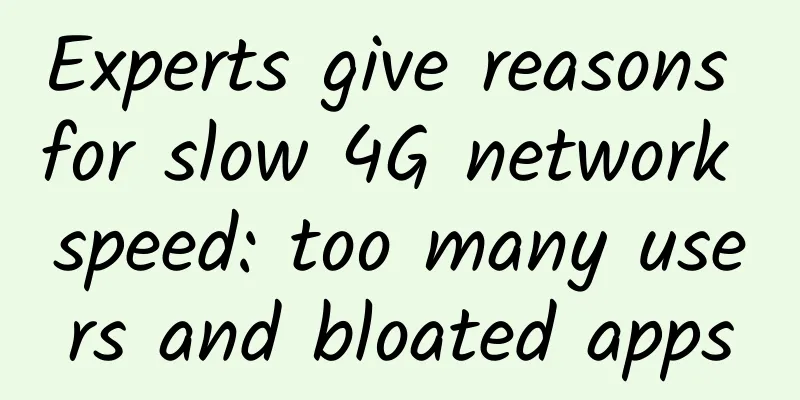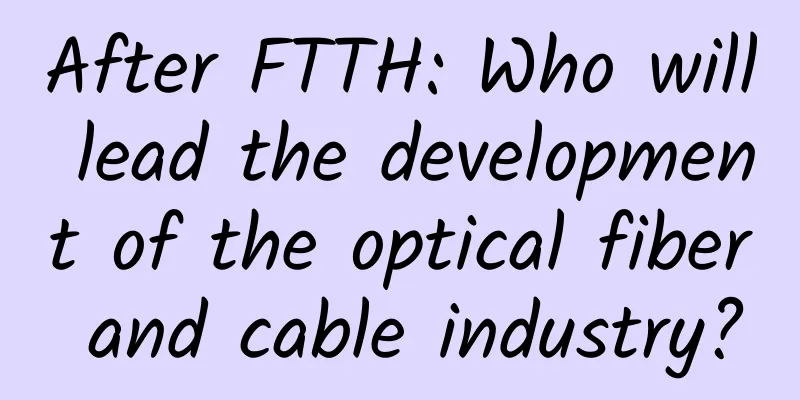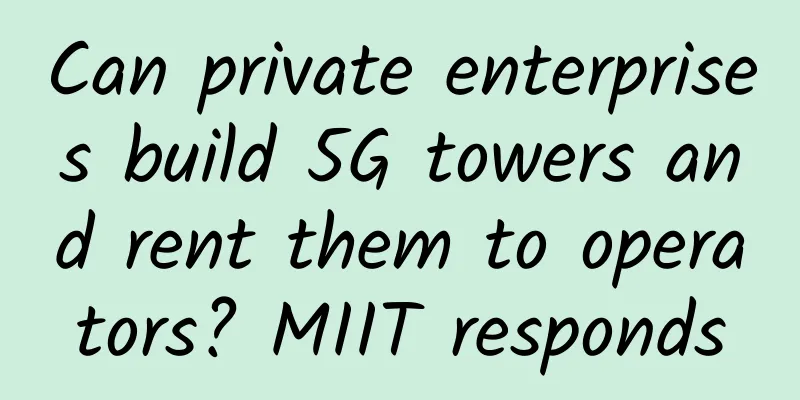6G Internet of Things: From the Internet of Everything to the Intelligent Internet of Everything, opening up smart life, smart production and smart society

|
At the 6G Internet of Things Forum of the 4th China Mobile Technology Week held today, Ma Shuai, deputy director of the Institute of Internet of Things Technology and Applications of China Mobile Research Institute, said that mobile communications have been updated every ten years. At present, the ITU has clearly defined the vision and indicator system of 6G, and the Ministry of Industry and Information Technology has taken the lead in allocating the 6GHz frequency band for 5G/6G systems. 6G research and development has entered an accelerated period. However, compared with 5G, 6G has more application scenarios, a wider range of technical fields, and more integrated elements, and will face more challenges. Ma Shuai introduced that 6G has the characteristics of immersive performance, integrated elements, full coverage, and network platform. The 6G Internet of Things will build the development goal of intelligent connection of all things in the future. Through "full-area integration, mutual coordination, and on-demand combination", it will further construct three major application scenarios of smart life, smart production, and smart society, and realize the transformation of the network from communication services to information services. At the perception level, facing the perception needs of all scenarios, all elements, multiple dimensions, and multiple granularities, the perception capabilities of 6G IoT will have the characteristics of high precision, miniaturization, integration, wireless, passive, intelligent, fully integrated, and ubiquitous. Among them, high precision, miniaturization, and integrated perception capabilities are the key foundation of 6G IoT; wireless, passive, and intelligent perception capabilities are important directions of 6G IoT; and fully integrated and ubiquitous perception capabilities are the inherent requirements of 6G IoT. At the communication level, in response to the differentiated needs of various scenarios in the three major areas of life, production, and society, the 6G Internet of Things will achieve lower power consumption, lower cost, higher speed, higher reliability, higher certainty, higher security, easy deployment, and maintenance-free communication capabilities through the integration of different technologies and the combination of capabilities. Among them, multi-network integration and elastic expansion are the key to the 6G Internet of Things to achieve one network with multiple capabilities and data interoperability; high reliability, low latency, and certainty are the core of the 6G Internet of Things to achieve intelligent interaction; zero power consumption, low cost, and maintenance-free are the basis for the 6G Internet of Things to achieve ubiquitous connectivity. In terms of computing power, the real-time data generated by IoT terminals and mobile terminals will explode in the future, and new AI scenarios will have strong demands for low-latency and low-power computing. The 6G IoT will continue to meet computing requirements such as high energy efficiency, low power consumption, high privacy protection, and low latency. Among them, the new computing architecture of "high energy efficiency and low power consumption" is the key to realizing the ubiquitous intelligence of the 6G IoT; the new integrated circuit technology of "low cost and strong computing power" is the core of realizing the intelligent connection of all things in the 6G IoT. At the platform level, the 6G IoT platform will become the core infrastructure that gathers massive IoT data and carries various 6G IoT services. It will improve process management efficiency through digital twin data and models. Among them, high concurrency + big data provides the 6G IoT platform with extensive and reliable basic data capabilities; data + models provide the 6G IoT platform with application-oriented digital twin core capabilities. In terms of intelligence, 6G IoT is expected to achieve interaction between 6G IoT devices and external intelligence through the integration of new technologies such as new computing paradigms, IoT knowledge graphs, and brain-like intelligence, and continue to learn and evolve in an open environment to continuously meet the personalized needs of users. Among them, the new computing paradigm is expected to achieve ubiquitous intelligence with low power consumption and high real-time enhancement, the knowledge graph is expected to achieve intelligent thinking, autonomous decision-making and intelligent collaboration of IoT devices, and brain-like intelligence is expected to meet the end-side reasoning and low power consumption requirements of 6G IoT application scenarios. At the application level, in response to the demand for real-time interaction in various fields such as life, production, and society, the 6G Internet of Things will provide key application capabilities for real-time collaboration and human-computer interaction in various scenarios. Among them, real-time cloud control capabilities provide low-cost, diversified interactive services, and new human-computer interaction capabilities bring more realistic and flexible interactive experiences. In terms of management, the characteristics of massive terminal access, complex heterogeneous networks, and differentiated services have put forward new requirements for management capabilities. Service-oriented global service quality assurance, resource-oriented global resource control and optimal configuration will become the core of 6G Internet of Things management. Among them, centralized and distributed coexistence and distributed autonomy are the data basis of 6G Internet of Things management, lightweight operation and maintenance, and endogenous intelligence are the algorithm core of 6G Internet of Things management, and intention perception and human-computer interaction are the service keys of 6G Internet of Things management. In terms of security, the 6G IoT system integrates multiple functional levels, covers a wide range of applications, and faces diverse roles, which makes it have higher standards and more complex security requirements. Excellent network security is the foundation of the 6G IoT system. Among them, network security is the basic guarantee for the 6G IoT to achieve the intelligent connection of all things, and data security is an important prerequisite for the healthy development of the 6G IoT. Ma Shuai said that the 6G Internet of Things has the characteristics of multi-dimensional perception, ubiquitous interconnection, endogenous capabilities, and full-area coverage. It will realize the connection of full-area data and the integrated application of all scenarios, and further realize the leap from the Internet of Everything to the Intelligent Internet of Everything, and help realize the 6G vision of "Digital Life, Ubiquitous Intelligence". |
<<: Say goodbye gracefully - TCP protocol waves four times
Recommend
Ping An Technology and Huawei Sign Intelligent Network Joint Innovation Cooperation Agreement to Promote Digital Transformation in the Financial Industry
On April 18, at the 2018 Huawei Global Analyst Co...
5G to B development requires strategic patience
After more than two years of development, 5G has ...
Ministry of Industry and Information Technology: my country has built nearly one million 5G base stations covering all prefecture-level cities across the country
At present, the number of 5G terminal connections...
KubeDL joins CNCF Sandbox to accelerate the cloud nativeization of AI industry
On June 23, 2021, the Cloud Native Computing Foun...
How to choose an API management platform for your business
【51CTO.com Quick Translation】As we all know, API ...
80VPS: US 8C cluster server monthly payment starts from 800 yuan, Hong Kong 8C cluster server monthly payment starts from 1000 yuan
Recently, some readers asked about cluster server...
Maxthon Hosting 20% off, Hong Kong High Defense VPS monthly payment starts from 160 yuan, 20-50Gbps protection, dual IP
There are many merchants selling Hong Kong VPS, b...
5G+AI: Will it produce the effect of 1+1>2 in the future?
Since the information industrial revolution, peop...
Why can't I ping the port number? How can I verify that the port number is available?
1. Why can't the port number be pinged? Ping ...
By 2025, the 5G core market size will reach US$9.497 million
[[380039]] According to ResearchAndMarkets, the g...
How to estimate the power configuration of 5G base stations?
5G base station construction, supporting faciliti...
Efficient transfer tips, revealing the pros and cons of Rsync and SCP, helping you make a wise choice!
In daily operation and maintenance work, file tra...
Facing the high pressure of price war, how will Yunfan Accelerator choose to break through?
[51CTO.com original article] What kind of CDN ven...
In-depth analysis of SDN switch configuration and application issues
SDN (Software Defined Networking) is an emerging ...
One picture shows the relationship between China Mobile, China Unicom and China Telecom
Now China Mobile, China Telecom and China Unicom ...









